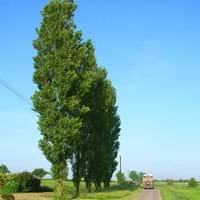Life Span
Annual and Perennial
Perennial
Type
Bulb or Corm or Tuber
Tree
Origin
Latin America and the Caribbean, Central America, Micronesia
Europe, Northern Africa
Types
Hannah Yams, Japanese Sweet Potatoes
Not available
Number of Varieties
Not Available
Habitat
Cold Regions, Tropical regions
Fields, Open areas
USDA Hardiness Zone
11-12
3-9
Sunset Zone
21,22
A3, 1a, 1b, 2a, 2b, 3a, 3b, 4, 5, 6, 7, 8, 9, 10, 11, 14, 15, 16, 17, 18, 19, 20, 21, 22, 23, 24
Habit
Vining/Climbing
Narrow Upright/Fastigiate
Flower Color
Not Available
Not Available
Flower Color Modifier
Bicolor
Bicolor
Fruit Color
Not Available
Not Available
Leaf Color in Spring
Green, Purple, Light Green, Chartreuse, Bronze
Green, Yellow green
Leaf Color in Summer
Light Green
Green, Yellow green
Leaf Color in Fall
Several shades of Green
Yellow
Leaf Color in Winter
Light Green
Not Available
Leaf Shape
Heart-shaped
Diamond-shaped
Plant Season
Spring, Summer, Fall, Winter
Spring, Summer, Fall, Winter
Sunlight
Full Sun, Partial Sun
Full Sun
Growth Rate
Very Fast
Very Fast
Type of Soil
Clay, Loam, Sand
Loam, Sand
The pH of Soil
Acidic, Neutral, Alkaline
Acidic, Neutral, Alkaline
Soil Drainage
Well drained
Average
Bloom Time
Late Fall, Early Winter, Winter
Spring
Tolerances
Drought
Soil Compaction
Where to Plant?
Ground, Pot
Ground
How to Plant?
Stem Cutting, Tuber propagation
Not Available
Plant Maintenance
Medium
Low
Watering Requirements
Average Water Needs, Needs a lot of water initially
Does not require lot of watering, when new, water every week
In Summer
Lots of watering
Less Watering
In Spring
Moderate
Alternate Days
In Winter
Average Water
Average Water
Soil pH
Acidic, Neutral, Alkaline
Acidic, Neutral, Alkaline
Soil Type
Clay, Loam, Sand
Loam, Sand
Soil Drainage Capacity
Well drained
Average
Sun Exposure
Full Sun, Partial Sun
Full Sun
Pruning
Remove damaged leaves, Remove dead branches, Remove dead leaves
Remove dead branches
Fertilizers
All-Purpose Liquid Fertilizer
Fertilize the soil instead of direct applying, organic fertlizers
Pests and Diseases
Aphids, Beetles, Leafminers, Red blotch
Healthy tree
Plant Tolerance
Drought
Soil Compaction
Flowers
Showy
Insignificant
Flower Petal Number
Single
Not Available
Foliage Texture
Coarse
Medium
Foliage Sheen
Matte
Glossy
Invasive
Sometimes
Sometimes
Attracts
Aphids, Beetles, Mites, white worms
Birds
Allergy
Abdominal pain, Skin rash, Swelling, Vomiting
Anaphylaxis, Asthma, Hay fever, Runny nose, Watery eyes
Aesthetic Uses
Not Used For Aesthetic Purpose
Showy Purposes
Beauty Benefits
Not Available
Not Available
Environmental Uses
Air purification
Agroforestry, Shadow Tree, Windbreak
Medicinal Uses
Potassium, ß-carotene, Vitamin C
Diaphoretic, Diuretic
Part of Plant Used
Leaves, Root, Shoots
Not Available
Other Uses
Used As Food, Used for its medicinal properties
Economic Purpose, Food for animals, Grown for shade
Used As Indoor Plant
Yes
No
Used As Outdoor Plant
Yes
Yes
Garden Design
Container, Edible, Groundcover, Hanging Basket, Herb / Vegetable, Mixed Border, Vine
Feature Plant, Screening / Wind Break, Shade Trees, Street Trees
Botanical Name
IPOMOEA batatas
POPULUS Nigra Italica
Common Name
Sweet Potato, Sweet Potato Vine
Lombardy Poplar
In German
Süßkartoffel
Lombardei Pappel
In French
Patate douce
peuplier de Lombardie
In Spanish
Batata
Lombardía álamo
In Greek
Γλυκοπατάτα
Λομβαρδίας λεύκες
In Portuguese
Batata doce
Lombardia Poplar
In Polish
Słodki ziemniak
Lombardia Topola
In Latin
Dulcis SOLANUM TUBEROSUM
Lombardiae Poplar
Phylum
Magnoliophyta
Tracheophyta
Class
Magnoliopsida
Magnoliopsida
Order
Solanales
Malpighiales
Family
Convolvulaceae
Salicaceae
Clade
Angiosperms, Asterids, Eudicots
Angiosperms, Eudicots, Rosids
Tribe
Not Available
Not Available
Subfamily
Not Available
Not Available
Number of Species
Not Available
Importance of Sweet Potato and Lombardy Poplar
Want to have the most appropriate plant for your garden? You might want to know the importance of Sweet Potato and Lombardy Poplar. Basically, these two plants vary in many aspects. Compare Sweet Potato and Lombardy Poplar as they differ in many characteristics such as their life, care, benefits, facts, etc. Every gardener must at least have the slightest clue about the plants he wants to plant in his garden. Compare their benefits, which differ in many ways like facts and uses. The medicinal use of Sweet Potato is Potassium, ß-carotene and Vitamin C whereas of Lombardy Poplar is Diaphoretic and Diuretic. Sweet Potato has beauty benefits as follows: Not Available while Lombardy Poplar has beauty benefits as follows: Not Available.
Compare Facts of Sweet Potato vs Lombardy Poplar
How to choose the best garden plant for your garden depending upon its facts? Here garden plant comparison will help you to solve this query. Compare the facts of Sweet Potato vs Lombardy Poplar and know which one to choose. As garden plants have benefits and other uses, allergy is also a major drawback of plants for some people. Allergic reactions of Sweet Potato are Abdominal pain, Skin rash, Swelling and Vomiting whereas of Lombardy Poplar have Anaphylaxis, Asthma, Hay fever, Runny nose and Watery eyes respectively. Having a fruit bearing plant in your garden can be a plus point of your garden. Sweet Potato has no showy fruits and Lombardy Poplar has no showy fruits. Also Sweet Potato is not flowering and Lombardy Poplar is not flowering . You can compare Sweet Potato and Lombardy Poplar facts and facts of other plants too.





